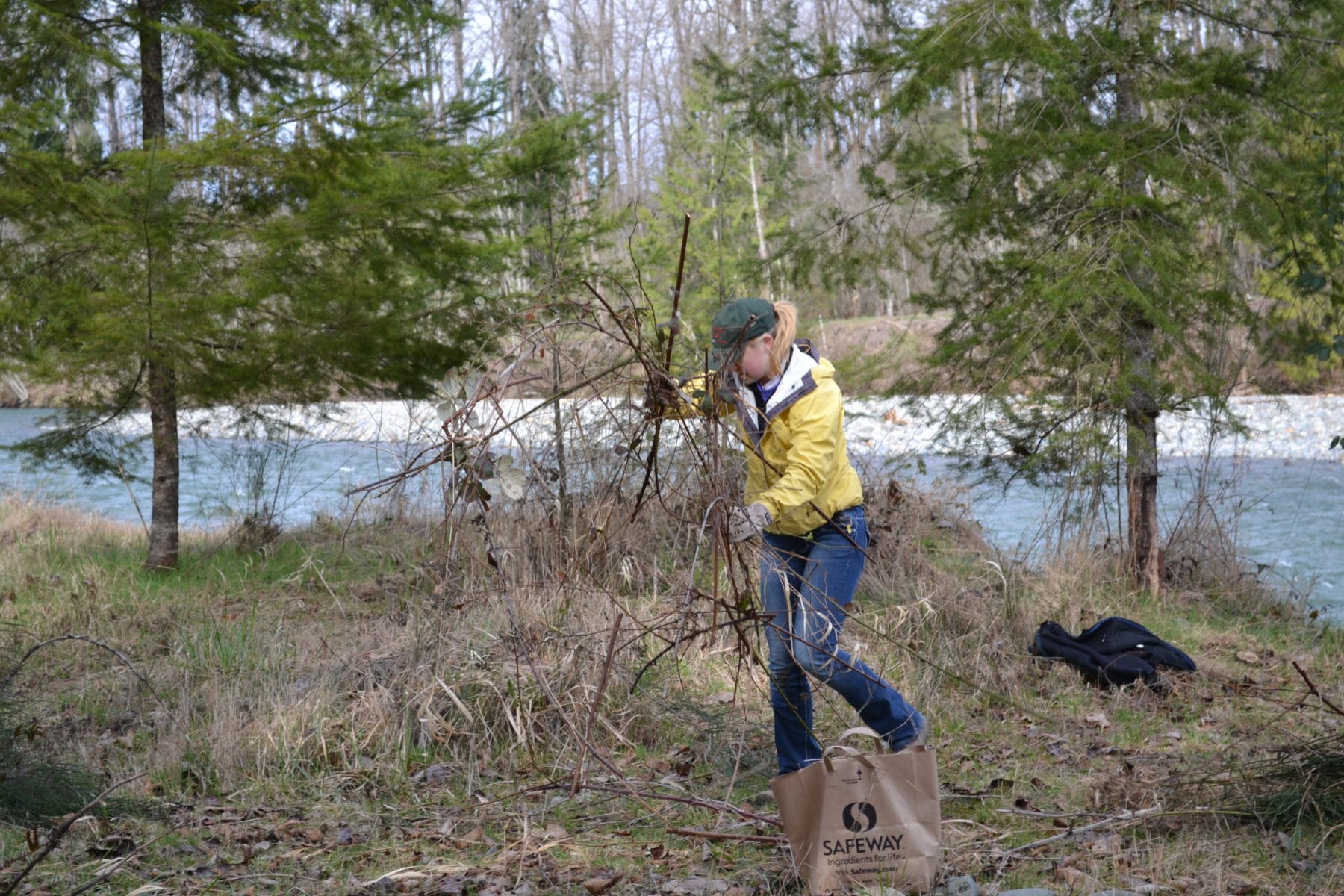Restoring Land for the Health of Our Waters
What do salmon and insects have in common? Aside from the fact that insects are a common food source for young salmon, both salmon and insects love dead, soggy wood. Freshwater insects rely on wood as their primary food source, and salmon use it for much-needed rest as they make the arduous journey to their spawning grounds.
Logs and branches that fall into rivers diversify water flow and create meandering bends that are essential to the health of aquatic life. Slow-moving pools are utilized by wildlife in countless ways: as insect-filled feeding areas, as places for fish to spawn, as shelter for amphibians and reptiles, the list could go on.
Riparian vegetation – trees and shrubs that grow along our streams and river banks – provides the only natural source of wood entering our freshwater streams. In addition to fallen debris, the roots of these plants prevent erosion and improve water quality by trapping sediment and pollutants. Shade from their leaves and branches cool water temperatures in the summer, providing a less stressful, more oxygen-rich environment for aquatic life. Plus, logs can be used as river crossings for land mammals, and forested riverbanks become “bird corridors” that support a variety of bird species both local and migratory.


Studies have shown that riparian vegetation even impacts the health of our resident orca whale population. Healthy riverbanks mean healthy salmon, and Southern Resident orcas in the Puget Sound rely heavily on Seattle-area Chinook salmon as a food source. Since salmon are so dependent on riparian vegetation, the impact of this vegetation trickles down through the food chain to help ensure the success of the Puget Sound’s most beloved marine mammal species.
Despite their numerous benefits, forested riparian areas still make up the smallest percent of forest land in Washington. The expansion of logging, development, and agriculture in the past one hundred years has had a disproportionate impact on forest land along freshwater systems. For over a century, the enormous ecological benefit of these areas has been overwhelmed by the prioritization of unsustainable natural resource consumption and development.
In the past few decades, this trend has shifted. Since the Greenway’s founding in 1991, ecological restoration has become an increasing priority for non-profit organizations, government agencies, and private industries alike. In 2018, our volunteers devoted nearly 21,000 hours of on-land restoration, including more than 30 groups from for-profit companies. By volunteering with the Mountains to Sound Greenway Trust, you directly help restore essential riparian areas across the region. From the Snoqualmie River to Issaquah Creek to the Raging River, freshwater systems across the Greenway benefit from the hours you spend mulching, planting trees, and grubbing blackberry.
Interconnectedness is embedded in our local ecosystems, and one seemingly small action — such as planting a tree — does more than just keep one plant alive. It contributes to the revitalization of our watersheds as systems of natural, human, and cultural importance. We hope you will continue to help the Greenway ensure that our local riparian areas are healthy, successful, and full of life.





